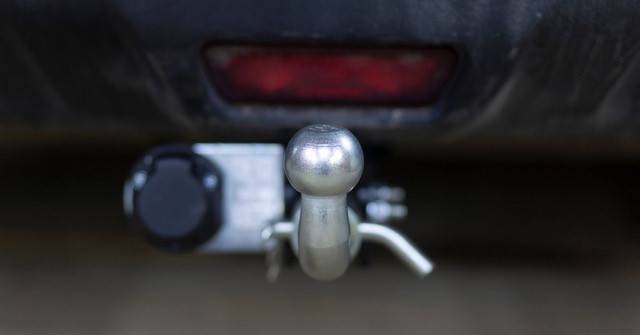Guide To Buying a Mobility Scooter
Buying a mobility scooter is the first step in retaining or regaining your mobility. Not only is it a medical device, but it’s also a lifestyle choice, so it’s crucial you select the right scooter for your requirements. With thousands on the market, though, the prospect of choosing can be overwhelming.
We’ve put together a mobility scooter buying guide to outline the key considerations for choosing your device.
Mobility Scooter Class & Size Considerations
Mobility scooters are divided into two main categories: Class 2 and Class 3.
Class 2 – Pavement Scooters
Class 2 scooters are built for pavement use only, with a 4 mph restriction. You can use pedestrian and zebra crossings to travel across the road, but you aren’t permitted to travel along the road, except where there is no pavement. They are typically smaller in size and have a smaller range of travel.
Class 3 – Road Legal Scooters
Class 3 scooters tend to be larger, more durable and a little quicker, with a speed limit of 8 mph. These can be used on the road, provided they’re registered with the DVLA and have lights, indicators, horn, rear view mirrors and emergency hand brakes. You may also find our guide to road rules for mobility scooters useful to ensure you remain safe when using your scooter.
If you’re only travelling shorter distances, and have limited storage capacity, then Class 2 is the way to go. If you’re looking to travel longer distances and on tougher terrain, you’ll be much more comfortable with a Class 3.
The Range of The Mobility Scooter
One of the most important considerations is understanding when and where you’ll be using your scooter. Is it for independent journeys to the local shops, visiting friends and family or taking the scooter with you on day trips and holidays?
This will determine what sort of range of travel you’d require from the scooter. Due to their purpose, Class 3 scooters have a better range than their Class 2 counterparts. Some will offer maximum travelling distances as far as 35 miles, offering you more freedom and won’t need to change the battery as often. Whereas pavement-use scooters are usually limited to 8-10 miles, ideal for one short trip per day.
Control Layouts
You’ll find that control layouts also vary from one scooter to the next, and can affect how comfortable you are while riding. If the acceleration trigger is a little further away, for example, your hands may be stretched when pulling it. It could also prove difficult or inconvenient to operate the brakes if your dexterity is limited.
Therefore, it’s imperative that you test drive any of the scooters that you’re considering. This gives you the chance to check it’s comfortable and the right fit for your requirements.
Mobility Scooter Features & Accessories
There are several features and accessories to consider when buying a mobility scooter to ensure it meets all of your needs. Such as the wheels, operation, tiller, seat, battery and brakes. All of which, a scooter retailer will be able to help you with.
Additional accessories can be purchased depending on your wants and needs, such as a walking stick or crutch holder, storage covers, canopies and shopping baskets.
Comfortability
As you may be sitting and travelling in your scooter for long periods of time, a crucial element to establish is the level of comfortability. One of the biggest aspects of this is the scooter seat, especially to ensure correct posture. A basic seat will include a padded base and back rest with adjustable armrests, but the height, adjustability, position and angle will vary largely from model to model.
Storage Considerations
Another element of buying a mobility scooter is deciding where you’ll be storing it. Ideally, you would need a secure and waterproof space close to a powerpoint to charge the battery, such as a garage.
However, not everybody has outdoor storage space, so you can also store it within your home. Simply ensure it will not obstruct entry ways and is also close to a charging point.
Where storage is extremely limited, it’s also possible to store your device within the boot of your car and just take the battery pack inside for charging. A boot hoist is an ideal solution to help lift & load your mobility scooter within the car.
Warranties & Payment Options
Finally, once you’ve narrowed down your options, it’s recommended to check the warranties, price and payment options. The scooter retailer will be able to advise.
With a mobility scooter guide, searching for your new mobility scooter is simple. Take your time and try as many models as you can; It won’t be long before you discover your perfect ride. Our team is available to advise on adaptations to help you transfer from your scooter into your car as well as lifting and storing solutions within the boot of your car, contact us to find out more.
If you’re looking for advice on getting the most out of your scooter, check out our guides to using a mobility scooter and useful mobility scooter features.

Lifestyle
Staycation Ready: Travel, Tow & Explore With Your Motability Car
Many people don’t realise that you can tow your Motability car, provided you have permission from Motability first. Read our guide for everything you need to…

Lifestyle
Disability Pride Month 2025
July is Disability Pride Month which offers the opportunity to highlight and celebrate the disability community and their pride. Discover the Disability Pride Month origin, discover…

Driving with adaptations
Learning to drive with a disability
Learning to drive can be a life-changing step towards greater independence, especially for people living with a disability. But the process can feel daunting without the…